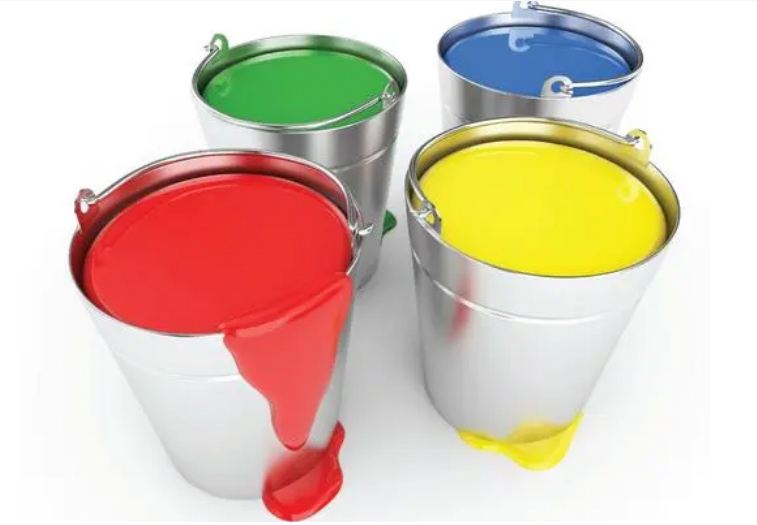Color paste application common problems analysis
Color paste is added to the paint, the color floats on the surface
Reasons
1) The difference of surface tension between color paste and paint is too big
Paint generally uses anionic or ionic polyelectrolyte dispersant, while color paste generally uses non-ionic or with some anionic dispersant, so that white pigment and colored pigment adsorb different wetting dispersant on the surface and have different surface tension.
2) Color paste and paint compatibility is not good
The emulsifier outside the emulsion particles is not compatible with the surfactant outside the color and filler particles, causing flocculation of pigments.
3) Mismatch of hydrophilic and oleophilic balance values between color paste and coating
The oleophilic material has small surface tension at its oleophilic end and floats to the surface more easily.
4)The influence of thickening agent
Some pseudoplasticity thickening agents have great affinity with the surfactants with large HLB value, which makes them desorb on the surface of pigment, causing the aggregation and flocculation of pigment, resulting in floating color and flower.

Solution
The best way to control the floating color is to choose the suitable wetting and dispersing agent, adjust the surface nature of the particles, and adjust the balance of its movement.
Such as colored pigment flocculation, floating white, pigment flocculation floating color, can use wetting and dispersing agent to relieve flocculation, improve the surface properties of the particles to prevent or control floating color, in the process of controlling floating color several floating color phenomenon can be mutually transformed, control floating color. If the floating color is the color of the color paste, the HLB value of the coating than large, more hydrophilic, the basic paint preparation process to add oleophilic low-polarity additives to reduce the HLB value of the coating; if the floating color is white, the HLB value of the coating is relatively small, more oleophilic, the basic paint preparation process to add hydrophilic additives to increase the hydrophilic nature of the coating.
Certain systems can be anti-floating color in the coating film, adding anionic wetting and dispersing agent in the finished paint, adsorbed on the surface of carbon black or organic violet pigment particles, improving the surface properties of pigment particles, enhancing the polarity, these non-polar weakly polar particles have the same polarity as white particles, and the polymer has the same degree of adsorption flocculation, and thus comparable movement in the drying of the coating film, controlling the floating color. A surfactant that strongly reduces surface tension, commonly silicone surfactants, is selected to migrate to the surface to form a single molecular film during coating film drying, balancing surface tension and controlling bloom; however, floating color is likely to persist.
Add some additives that can produce thixotropic structure, such as kaolin, or silica, to form a network structure in the paint film to prevent pigment separation, control pigment flocculation, sedimentation and Benard spiral flow, to reduce the phenomenon of floating color and flowering, thus preventing floating color or flowering.
2 color paint on the wall roller coating in the obvious roller marks
Reasons
1) Uneven thickness during painting operation
2)Construction without wet joint
3)compatibility problem
4)Insufficient amount of co-dose in emulsion paint
5)Insufficient amount of emulsion in emulsion paint
6) The wall is not constructed at one time

Solution
Mainly for the solution of the compatibility problem:
1)Mechanical dispersion (color paint)
Color paint color can be shown under certain mechanical force dispersion.
2)Adding wetting agent (color paint)
After adding wetting agent, the color becomes much darker, the color difference of finger study becomes smaller, and there is no obvious brush marks after brushing the board.
3)Adjust the paint formula (base paint)
Change the wetting and dispersing thickening system of paint to solve the compatibility problem of paint and color paste.
3 rainwater after the color paint surface has obvious rain marks
Reasons
1)Poor water resistance of base paint (emulsion is too hydrophilic, too much wetting agent or too much hydrophilic additives)
2)The water content of the substrate is too high or the humidity of the environment is too large
3)Closing primer, not reach the effect
4) The coating film is not completely dry when it encounters water flushing
5) Too much residual additives in the dark paint

Prevention methods
1)Use surfactants as little as possible, and use silicone as much as possible to reduce moisture absorption.
(2) Use fluorine modified resin or additives to enhance water repellency and anti-fouling properties.
(3) Use good water resistance emulsion.
4)Coat the surface with glossy varnish.
4 After the rain, the color paint surface has obvious color loss
Reasons
1)Insufficient time for the paint film to dry, less than 2 hours after the construction of the rain.
2) The PVC concentration of the paint is too high, i.e. the emulsion is too low or the filling amount is too high.
3) The paint film is extremely poor in water resistance.
The solution
1)Improve the content of emulsion.
2) Choose the emulsion with good water resistance.
5After a period of time, the wall surface is obviously faded (flowering)
Reasons
1) The content of emulsion of the paint is low.
2)The water resistance of the paint is not good.
3) Improper choice of color paste.
4) Dark color will also show lighter color if the paint film is chalked.
5) Color migration (to the internal migration).
6) Poor drying rate caused by conditions such as sunlight temperature of construction works.
7) Not enough flatness, under the influence of gloss caused by the distant visual poor.
Solution
1)Increase the emulsion content in the paint.
2)Choose the color paste with good weather resistance.
3) Engineering conditions control.
6 Unable to mix the required color
Reasons
1)Inappropriate content of titanium white (colors with poor coverage cannot be exhibited).
2) Improper choice of color paste (some colors cannot be replaced by other color paste).
3) Color migration.
Solution
1)Choose the paint with suitable titanium dioxide content.
2)Choose the color paste with good compatibility.

